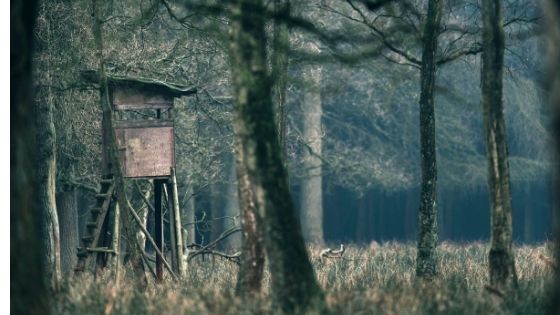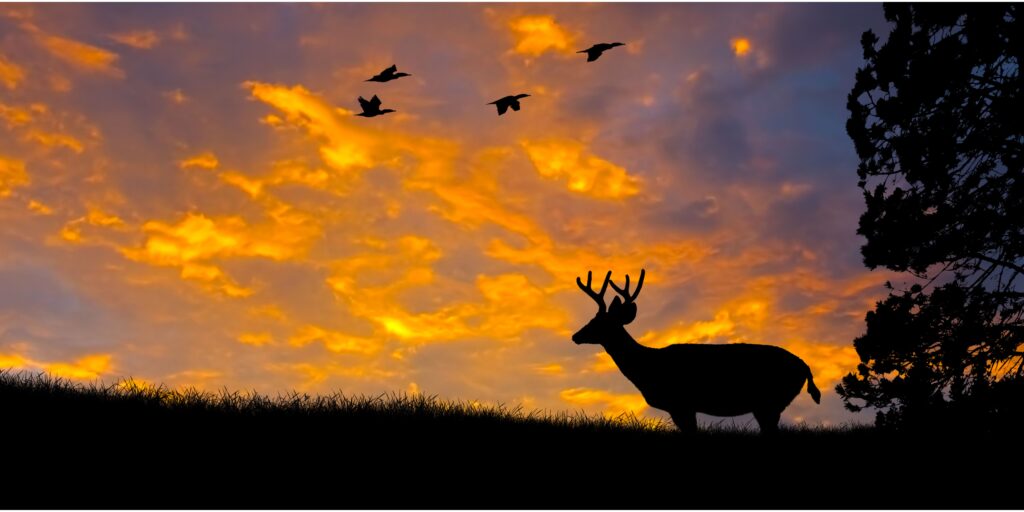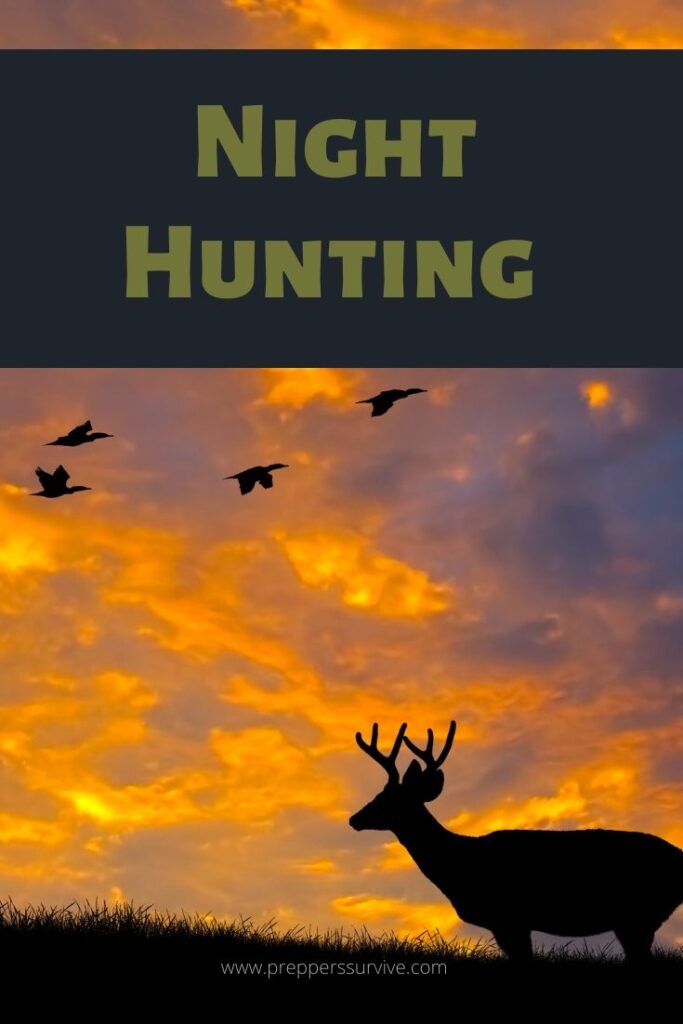
Hunting during the night is becoming more and more popular as hunters begin to explore hunting tips to improve low-light hunting conditions. The excitement and thrill of hunting in unfamiliar conditions make it an unforgettable experience. Night hunting, also known as low light hunting, has also become popular due to restrictions in some states on the type of animals you can hunt during the day and night. Big-game hunting is usually permitted only during the day. During the night, you can hunt for animals like feral hogs, coyotes, and bobcats. With night hunting, even the most experienced day hunter might struggle, and that is why it is important you get some tips to improve your hunting at night and for your safety.
Apart from the excitement of hunting, some animals only come out to feed during the night. If you’re hunting these types of animals, you may need to consider night hunting. Some animals like whitetails, mule deer, rabbits, and squirrels feed primarily at dawn or dusk when the light condition is poor.
Do you want to hunt these animals? Get ready to hunt at night. Before you jump out at night to hunt, there are some important things to keep in mind. These tips will not only keep you safe but also improve your hunting. Everything you need to know about scopes and sights will be part of it, so be sure to read up on everything to help you to be more accurate and successful in your hunt.—
What Hunting Gear Do You Need For Night Hunting?

A Flashlight
You’d want to see clearly in the night and not let darkness come in your way. A good flashlight will help you see better and protect you from dangers lurking in the dark. Choosing a reliable flashlight is important, so make sure it’s waterproof and shockproof and can withstand all weather conditions. A good quality flashlight will also last longer than other models and won’t let you down when you need it most.
Look for a flashlight with at least 200 lumens of brightness, which is enough to light up a large area or a dark room. If you want something smaller and more portable, then consider getting one with less than 50 lumens of power. The best flashlights for night hunting can be used as handhelds and headlamps, so ensure you get one with an adjustable strap that fits comfortably around your head.
A Good Knife
You’ll need to include a knife in your night hunting gear for skinning and gutting your game. Make sure you get a good quality knife that is sharp and can handle all kinds of cuts. A fixed blade knife is always better than a folding knife because it’s more durable and won’t close on your fingers when using it. Opt for a knife with a comfortable grip that won’t slip in your hand, even when wet. And make sure the sheath is strong and sturdy enough to protect the blade when you’re not using it.
Night Vision Goggles or Binoculars
These are essential for spotting game in the dark. Night vision goggles amplify light to help you see in the dark, while binoculars give you a wider field of view. If you’re using night vision goggles, make sure they’re compatible with your flashlight so you can see better. And if you’re using binoculars, get a pair that has an infrared sensor so you can see heat signatures in the dark. You can also consider Optics Force if you want to purchase quality red dot sights for better viewing.
A Good Rifle and Ammunition
If you’re going to be hunting deer, you’ll need a rifle that can shoot accurately at long range. A good scope is also essential for night hunting because it will help you see better in the dark. And make sure you get ammunition specifically designed for night hunting, such as hollow point or subsonic rounds. These are less likely to scare away game and won’t produce as much noise, so you won’t alert your prey to your presence.
Camouflage Clothing
You’ll need to wear dark, dull-colored clothing so you blend in with your surroundings and don’t stand out in the dark. Avoid wearing anything shiny or reflective because it will make you more visible to game animals. And make sure your clothing is loose-fitting and comfortable so you can move around freely without making any noise.
5 Tips to Improve Night Hunting
1. Find Out Hunting Restrictions
First things first, before you start any night hunting, find out if there are any restrictions on nighttime hunting in your state. Different countries and states adopt different strategies for preserving wildlife which include restrictions on the type of animals you can hunt and weapons you can use during night hunting.
Some states have an outright ban on nighttime hunting, while others merely place restrictions on the animals and weapons you can use.
It is illegal in most states to hunt deer at night. To avoid getting in trouble with the authorities, first, figure out if there are restrictions in your region and what they are.
2. You Need a Pair of Binoculars
The biggest challenge you’ll face when hunting at night is your poor vision. While most of the animals moving at night have clearer night visions, humans will naturally struggle to see clearly in poorly lit conditions. How do you improve your sight in low light conditions? A pair of binoculars will improve your vision. Scope Expert advises you get a pair of 7×50 binoculars as they let in more light than the regular 7×35 binoculars. Even though the added magnification the 7×50 binocular brings may not be needed, its better light-gathering ability would serve you well.
3. Focus on One Light
Understanding how your eyes work will let you have a more successful low-light hunting. The human eye takes some time, usually between 15 to 20 seconds, to acclimatize when there is a switch between light and darkness.
Switching your view constantly from light to dark will cost you precious seconds. The 15 seconds you lose before your visions become clearer is enough for your coyote to disappear into the dark. Focus your view on the dark instead of constantly switching your view from your light source or from the sky to the darker forest. Wearing a hat can keep the light from the sky out and keep your view better focused.
4. Choose a Suitable Hunting Location
The location you choose for your low-light hunting is just as important as the tools you take. You want to be sure you’ll find the type of animals you’re looking for in that location. It is best to seek the help of locals or people familiar with that location to get the right information on the animal route and the best-elevated regions. Get at least two hunting locations you can move to in case you do not find any game after a while. You should scout your locations during the day to figure out the best places to stay. You need to understand the terrain, so it is easier to move at night.
5. The Off-Center Vision Tactics
If you focus on an object in a dimly lit environment, that object tends to blur out and diminish. This will make it difficult to get your aim right when hunting at night. Here’s what you can do to improve your aim even in dim light. Focus your view some degrees away from the object. This will let your peripheral vision get a clearer image of the object. This is because the party of the eye that functions best in low light is at the edge of the retina.
Final Words
Night hunting can be fun and exciting, but it can also be dangerous if not handled properly. Night hunting is one of the most exciting and challenging ways to use your hunting skills. It can also be helpful if you know what to wear, where to go, what night hunting gear to pack, and which game animals to target. However, many hunters are hesitant to try night hunting because they don’t know what gear to take. You can’t just grab a flashlight and go, so consider the lists above for a successful night hunt and seek training from a professional.
Before you leave, subscribe to our newsletter. If you enjoyed this article, Night Hunting Gear, please share this article on your favorite social media.



Leave a Reply